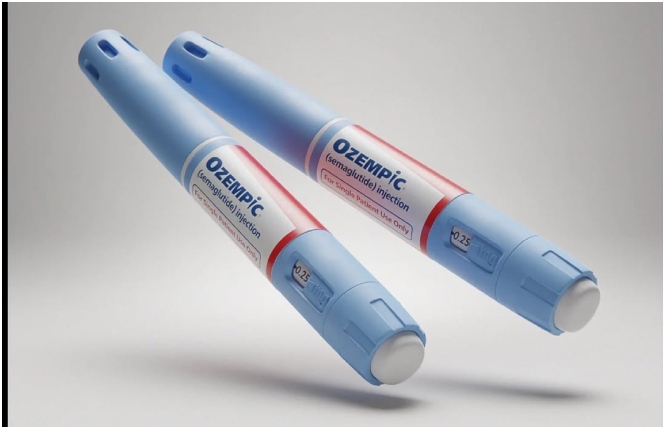Novo Nordisk’s blockbuster diabetes drug, repurposed as a weight-loss trend, is now at the center of one of the largest pharmaceutical litigations in recent years.
The legal fallout over Ozempic (semaglutide) continues to escalate, with more than 1,800 lawsuits consolidated into federal multidistrict litigation (MDL No. 3094) in the Eastern District of Pennsylvania. Analysts now project potential liability could exceed $2 billion, with new claims being filed weekly against Novo Nordisk and related GLP-1 receptor agonist drugs, including Wegovy, Rybelsus, and Eli Lilly’s Mounjaro.
Alleged Injuries Linked to Ozempic

Plaintiffs allege that Ozempic caused severe, sometimes permanent, health problems, including:
- Gastroparesis (stomach paralysis)
- Ileus (intestinal blockage)
- Persistent vomiting and dehydration
- Gallbladder disease and gallstones
- Pancreatitis and kidney injury
- Vision loss, specifically non-arteritic anterior ischemic optic neuropathy (NAION)
The litigation has been fueled by mounting medical evidence. A 2023 JAMA Internal Medicine study linked GLP-1 drugs to higher risks of gastroparesis. Ophthalmologists have also reported a rise in NAION among users, and the FDA’s Adverse Event Reporting System (FAERS) contains thousands of complaints regarding gastrointestinal and ocular complications.
Timeline of Key Legal Developments
- Aug. 2023: First lawsuit filed by Jaclyn Bjorklund, alleging gastroparesis and vision loss.
- Feb. 2024: MDL No. 3094 created: In Re: GLP-1 Receptor Agonists Products Liability Litigation.
- May 2025: Over 1,800 cases pending in federal court.
- Aug. 2025: Analysts project liability could surpass $2 billion as claims expand.
The MDL is overseen by Judge Karen Spencer Marston, who is handling pretrial motions, discovery, and the bellwether trial selection process.
The Legal Issues: Failure to Warn and Off-Label Use

At the core of the lawsuits are allegations that Novo Nordisk failed to adequately warn consumers and healthcare providers about the risks. Plaintiffs argue that many users—particularly those taking Ozempic for off-label weight loss rather than diabetes treatment—were not informed of the potential severity of side effects.
Novo Nordisk has denied wrongdoing, insisting the drug is safe when used as prescribed. But plaintiffs point to internal data, published research, and adverse event reports to argue that the company knew more about the risks than it disclosed.
What Comes Next in the MDL
The Ozempic MDL is currently in the discovery phase, with several important milestones ahead:
- Bellwether trials are expected in early 2026 to test the strength of representative cases.
- Expert testimony will play a central role in determining causation.
- Settlement negotiations may intensify if early trials favor plaintiffs.
Legal analysts note that if bellwether outcomes are plaintiff-friendly, Novo Nordisk could face global settlement talks to resolve thousands of claims at once.
Broader Implications for Pharmaceutical Litigation
The Ozempic lawsuits highlight growing concerns about off-label prescribing and the pharmaceutical industry’s responsibility to warn about risks when a drug is marketed or widely used beyond its original approval. With high consumer demand for weight-loss solutions, similar GLP-1 drugs may face increased legal exposure.
If successful, the litigation could reshape not only Novo Nordisk’s financial outlook but also regulatory and corporate practices around drug safety disclosures.

